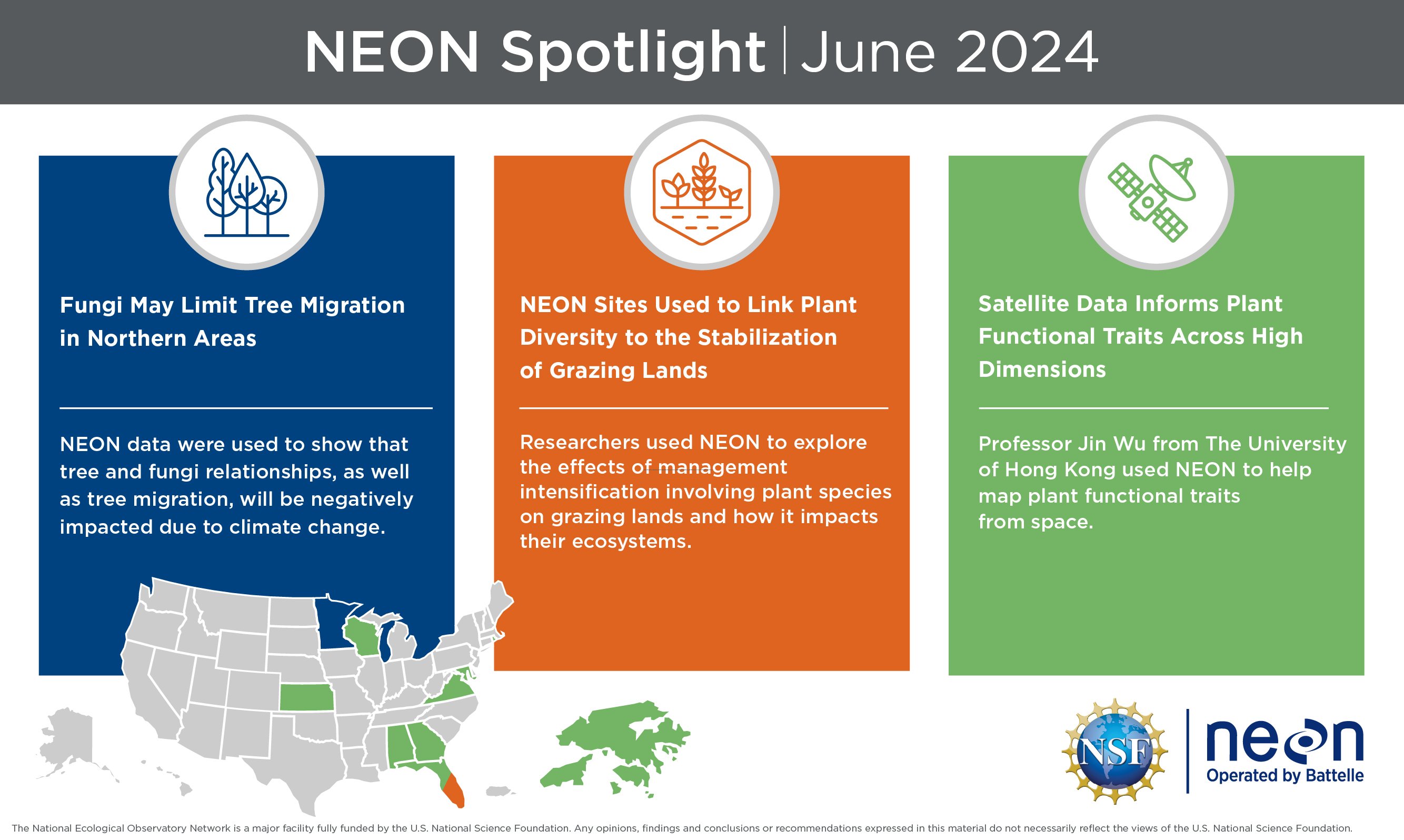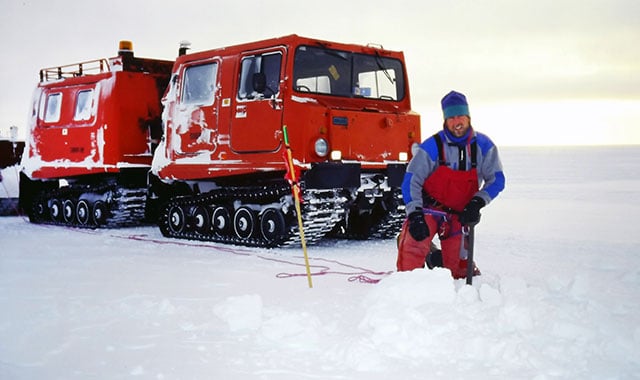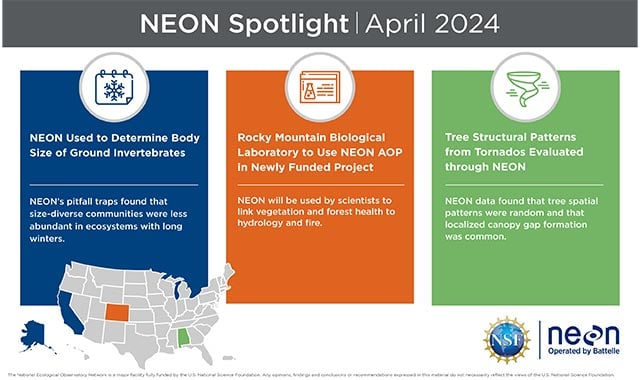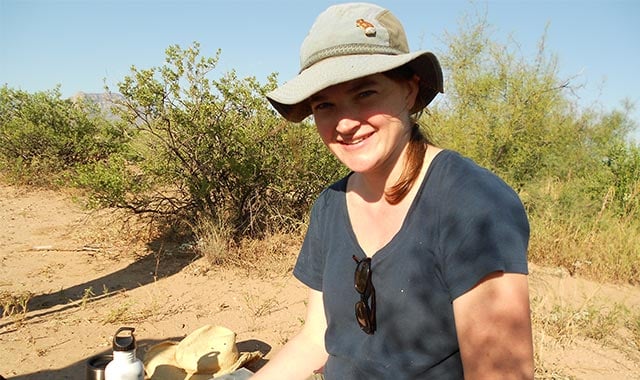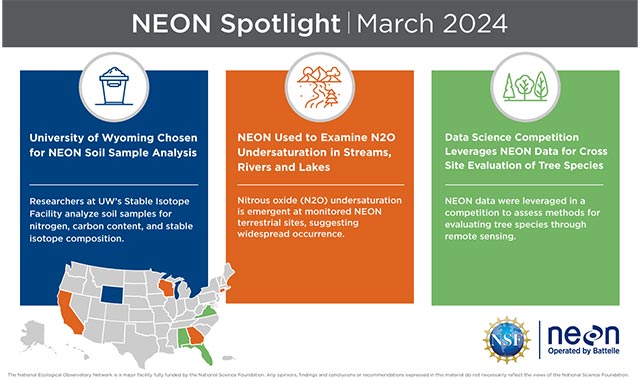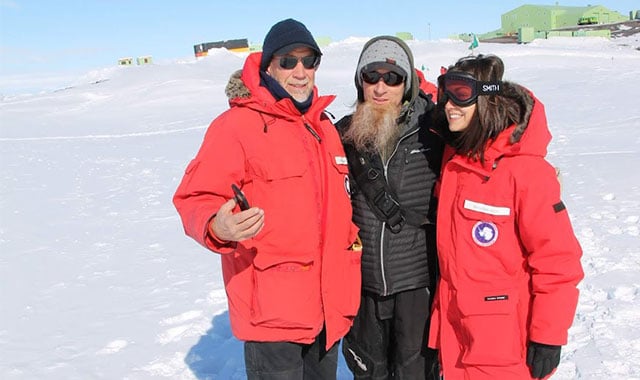August 2022: What’s New with NEON?

August’s NEON Spotlight highlights three new studies demonstrating how scientists are leveraging NEON data in their efforts to expand the bounds of ecological understanding. This month we look at scientists using NEON data to mitigate forest fires, researchers that created a standardized approach to make NEON data more accessible and digestible for users, and how NEON data will be critical in supporting a new national ecological research center. This month’s Spotlight demonstrates how the NEON program continues to be a critical source in fueling and sharpening our knowledge of the natural world.
This Month’s Spotlight
The latest news from NEON includes:
- NSF Invests in National Center for Diversifying Environmental Data Science
The University of Colorado, Boulder will host a new center for ecological data synthesis – the Environmental Data Science Innovation and Inclusion Lab (ESIIL) – dedicated to synthesizing a vast amount of data measuring larger-scale ecological changes like increasing wildfires and biodiversity loss. The project will train scientists on advanced tools, like machine learning, to analyze data being collected by continental-scale efforts like NEON and the Ocean Observatories Initiative. The National Science Foundation (NSF) will fund the new center with $20 million over 5 years.
- New Data Sensing Platform May Help Prevent Wildfires
Funded by the National Science Foundation (NSF) and developed by the Northwestern-Argonne Institute for Science and Engineering, a platform called Sage is being utilized to support the study of wild- and forest fires by pairing multichannel sensing with advanced computing technologies. Due to the successful deployment of the Sage network in Kansas, scientists plan to bring the system to California, Colorado, Illinois, and Texas via the NEON Assignable Assets program. Sage could also complement NEON’s mobile deployment platforms (MDPs) that can be deployed to terrestrial and aquatic sites all over the country.
- Researchers Create Standardized Workflow for NEON Data in ecocomDP
Scientists have developed a new open-source workflow to process and format NEON organismal data into the ecocomDP format and R, giving the biodiversity community a platform to compile research, contribute, and modify the workflow to gain appropriate datasets for their own projects. Although this effort began with the utilization of NEON data, researchers are also encouraging contributions from the ecology community and data from other ecological data networks.
Sponsored by the National Science Foundation (NSF) and operated by Battelle, NEON is a continental-scale ecological observatory network dedicated to providing high-quality, consistently generated, standardized data that is free and available to all users. By enabling scientists, researchers, and students to address critical questions and understand ecosystem changes over time, the NEON program allows the ecological community to tackle questions and problems at a scale that was not possible before.
You can read about the latest work and research in the NEON Spotlight every month at Inside Battelle, and on our social media channels. For more information about NEON, visit NEONscience.org.
Related Blogs
BATTELLE UPDATES
Receive updates from Battelle for an all-access pass to the incredible work of Battelle researchers.
